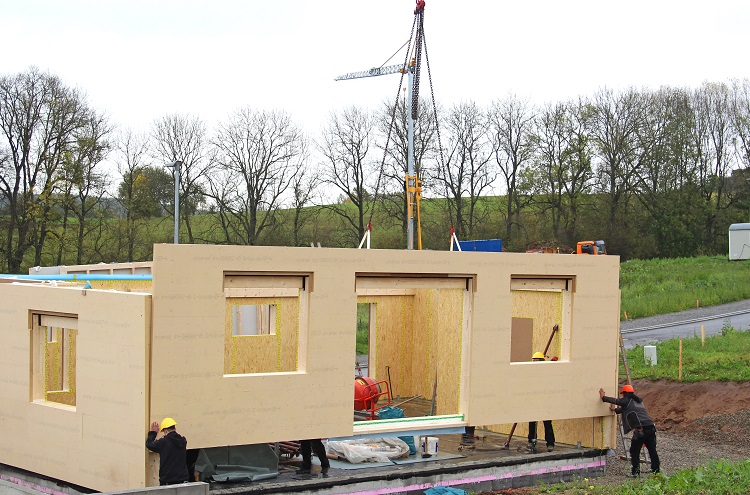The Difference Between Prefab and Modular Construction

Prefab is a general term used for a prefabricated building or building component that is manufactured in a factory prior to its final assembly at the construction site, whereas modular refers to something built or organized in self-contained units—like building blocks. A modular structure is at least 70% finished in the factory prior to delivery to the construction site. All modular buildings are considered prefabs, but not all prefabs are considered modular.
I first recall hearing the term modular back in the mid-1970s when my uncle developed a mobile home park. The typical size of a mobile home was 14 ft wide X 70 ft long. A few years later, they introduced double-wide mobile homes that came in two sections installed side by side on a concrete slab and attached together. Then, the siding on the two ends was finished, as well as a few pieces of trim on the inside, and the electrical connected to complete the work.
Modular construction has been trending more in the last few years and has gained popularity when it comes to large commercial projects. Marriott Hotel’s innovative 97-room Fairfield Inn & Suites in Folsom, California used modular construction methods to build guest rooms and bathrooms, which were constructed in an off-site factory and shipped to the job site. More developers and construction companies are taking notice and following suit. The global modular construction market was worth $84 billion in 2023 and is projected to reach over $130 billion by 2030.
Prefab building components have been around a long time. Contractors and developers use them in the building process for homes, apartment buildings, and commercial buildings. Some common building components include floor sections with the subfloor sheeting, wall sections with the attached substrate, and roof trusses. Many years ago, when a contractor would build a home, they would build the kitchen cabinets, windows, doors, and make all the trim right on the job. Today, it is all made in a factory and shipped to the job site. It is not cost effective for those items to be built on site.
With building components, the contractor determines what will work best for each project. Sometimes contractors use prefab walls and roof trusses only. In this example, the contractor would frame the first-floor deck on the foundation. Then, a truck would deliver the first-floor walls. Each component would be marked with a corresponding mark on the plans. The crane would pick each piece off the trailer and set it in place to be fastened. Once set in place, the carpenters would straighten and brace the walls to receive the trusses. A project schedule that uses prefab might show delivery dates for first-floor deck, first-floor walls, second-floor deck, second-floor walls, and roof trusses. Timing for these deliveries is critical to stay on schedule.
Below are some of the benefits of using modular and prefab construction.
- Time savings. Modular building can accelerate construction time by as much as 50% compared to traditional construction. The building can be constructed at the same time the site work is done rather than having to wait until after the excavation, utility, and foundation work is completed. And weather is less likely to affect the schedule, so companies can get into their buildings earlier and start working.
- Avoiding labor shortage. It can be difficult to find skilled labor for on-site work. Prefabrication can help companies accelerate completion while reducing on-site labor. This can increase productivity and improve competitiveness in the marketplace.
- Quality control & safety. Factory tools, work platforms, and jigs can offer greater quality control than on-site construction methods, and a consistent indoor environment reduces the impact of weather on production. Streamlined processes can improve job-site safety across the board.
- Reducing environmental effect. Protecting nearby wetlands and safeguarding areas to minimize disruption of local vegetation and wildlife is often a priority with authorities. The controlled environment of modular construction reduces water usage and supports the recycling of scraps and other materials. Also, streamlined transportation and less on-site traffic can result in reduced fossil fuel consumption.
- Cost savings. Factory labor can be less costly than employing skilled tradespeople, especially in large metropolitan areas. Plus, transporting building components and modular units from a factory can cost less than moving separate building materials to each site.
You can lose some flexibility in the final building design when using prefabrication, but the benefits can be substantial with proper planning.
An insurance company that cares about you and insuring the things you wish to be insured.
Get a Quote> Find an Agent>

